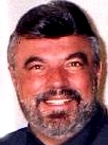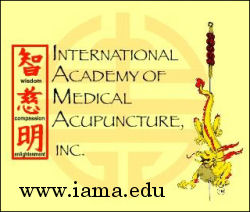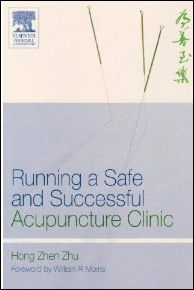Acupuncture & TCM Articles

Acupuncture Articles
by John A. Amaro L.Ac., Dipl.Ac.(NCCAOM), DC
 Dr. Amaro is an internationally known author, lecturer and practitioner beginning his practice of Acupuncture and Chiropractic in 1971. He has led 13 diplomatic Acupuncture study tours of The People's Republic of China escorting more than 500 doctors and practitioners. He has personally studied Acupuncture in nine separate Asian nations. Dr. Amaro is an internationally known author, lecturer and practitioner beginning his practice of Acupuncture and Chiropractic in 1971. He has led 13 diplomatic Acupuncture study tours of The People's Republic of China escorting more than 500 doctors and practitioners. He has personally studied Acupuncture in nine separate Asian nations.
He has received Certification in Acupuncture through the Columbia Institute of Chiropractic in 1973. This was one of the first Acupuncture postgraduate education programs for physicians in North America commencing in 1972.
He has been certified by the Waseda Acupuncture College in Tokyo, Japan in 1974 and graduated from the Chinese Medical Institute, Kowloon, China in 1976. He had previously taken postgraduate studies at the Tai Chung Medical School Taipei, China 1973.
What does it take to succeed in an acupuncture practice??
John A. Amaro L.Ac., Dipl.Ac.(NCCAOM), DC
In a clinical practice, “business success’ is usually measured by increased income, increased numbers of patients seen per day and lower operating expenses. Whereas, “practice’ success may be measured by a variety of factors to include, high percentage of favorable clinical results, high patient satisfaction, high referral levels, and personal satisfaction as to hours spent in the practice in ratio to time allowed for family, travel and self. The combination of business and practice success creates what is known as “personal success’ which may be defined by the material things of life to include nice homes, autos, clothes, and a never ending shopping cart of luxuries.
In the March 2006 issue of “Acupuncture Today’ the poll question was “On average, how many patients do you treat during a typical day in practice’? The published response was extremely disturbing when it showed of the total respondents that a full 72.8% of practitioners attend to 10 patients a day or less with close to 40% of those seeing less than 5 patients per day. Only 7.3% reported treating 20 or more patients per day. These statistics are far less than acceptable for a profession whose practitioners are capable of so much more.
Since it is a known business fact that the more people, customers, clients or patients one sees, the higher the income and the more established the business. Therefore in any business it is imperative that growth of people served be a vital part of success. However, on the other hand I have known doctors in my career who only wanted to see 5 patients per day, in order to play golf or in one case go sailing every afternoon. These individuals were highly successful only because they charged between $350 and $500 per treatment. Therefore they could be very financially successful with just a few patients. Obviously, this is the rare individual who would, could, or even attempt to stage this type of practice.
The disclaimer which accompanied the March 2006 “Acupuncture Today’ poll stated, “These results are based on 247 responses. As this is a voluntary, non-scientific survey, caution should be used in generalizing the results’. I would love to think the results derived from this survey were totally in error, however, the nations Gallup poll which is known to have a +/- ratio of less than 3% is conducted in exactly the same fashion as the AT poll, as is every other official poll in the country.
Out of morbid curiosity I created an identical poll which was mailed to graduates of The International Academy of Medical Acupuncture. Of the poll questions sent to medical and chiropractic practitioners in the four divided sections of the US representing the entire nation, an almost identical number of responses to the “Acupuncture Today’ poll were returned at time of this writing, namely 239 (eight less than the AT poll) with responses still coming in which were not considered for this writing as this article was already being prepared. However the feedback was exactly as reported. The difference between the two polls was that the DC´s and MD´s showed an almost polar opposite as 69% of those practicing acupuncture attested to treating 20 acupuncture patients per day or more whereas only 5% stated they saw 5 or less per day. The remaining 26% stated they treated an average of 10-20 acupuncture patients per day. In essence 95% of the poll reported they treat 10 acupuncture patients a day or more with close to 70% treating 20 or more. This of course compares to 72.8% of acupuncture practitioners seeing 10 patients a day or less. The above statistics are for acupuncture patients only they do not represent the totality of the entire practice day whereby a certain percentage of patients would not receive acupuncture but other therapies. We are only talking apples to apples, acupuncture patients by MD´s/DC´s to acupuncture patients by L.Ac.s.
Where is the profession going wrong when there is so much right with it? Why are our L.Ac. practitioners barely surviving when they should be thriving? Unlike medicine and chiropractic, acupuncture has never had any bad press. The general public has been given a positive report of acupuncture since the first article was published on it in 1971 (that´s 35 years). Virtually every newspaper, magazine and national broadcasting channel has positively reported on acupuncture numerous times. The same cannot be said for either medicine or chiropractic. However hundreds of thousands to millions of patients are clamoring to receive acupuncture and do in fact seek out those
medical and chiropractic physicians, who by state scope of practice laws, utilize acupuncture as an adjunct to their clinical practice. They should be seeking out licensed acupuncturists (L.Ac.´s) as well. Why are potential patients not knocking down the doors of acupuncturists???
Running a Safe and
Successful Acupuncture Clinic
 
It was told to me years ago by one of my Asian mentors in southwest China that “To become a Master, just do what Masters do’. The same can be said about emulating those who are already successful, just follow their lead and do what they do. However, I also fully realize that there is a large proportion of the AOM profession which would rather fail than emulate the approaches of an MD or DC utilizing acupuncture. Please bear in mind it totally depends on where you are in life and if business and practice success is a priority for you and your family. Otherwise, it is best to stay firm to principles which obviously are not working. However, your dignity, ego and self worth will be preserved.
For those who are willing to investigate why the scales are so tipped with success belonging to the DC/MD allow me to share with you what I know to be fact. My personal research revealed several practice principles which were common denominators amongst those highly successful DC´s and MD´s polled.
Compare these 20 observations with what you are doing and how you are practicing. If you are one who is not satisfied with your practice, then see if one or more of these items which highly successful practitioners are using may appeal to your practice sense. You don´t have to agree with them, this is just how highly successful practitioners practice. Don´t blame the messenger for the message. The observations are:
1. The overwhelming majority of the practitioners do not practice TCM. Instead they practice a Euro/Asian Ching Luo Mai (meridian) style of acupuncture.
2. Needles are used sparingly with a major portion of the treatment being delivered by 635nm 5mw red laser and 535nm 5mw green laser. The points are stimulated for 10-12 seconds per point. Electronic stimulation directly to the acupoint, non-invasive Japanese teishein and Gua Sha to both the meridian and the area of involvement are popular techniques.
3. When Japanese/Chinese herbs are utilized they are always administered as patent remedies.
4. There is a high utilization of Auriculotherapy.
5. Most diagnosis of the meridian system is conducted through contemporary diagnosis primarily the Electro Meridian Imaging (EMI).
6. Needle retention is more in keeping with Japanese styles in that it seldom lasts 20 minutes which is usual for TCM practitioners.
7. Acupuncture is explained in Western terms which the patient can understand as opposed to complex, confusing and foreign ancient Chinese principles which the 21st Century North American patient cannot relate to.
8. Practitioners generally have four treatment rooms or more whereby multiple patients may be treated at the same time. In addition they generally have on the average three staff personnel who assist with treatment, appointments and collections.
9. Most practitioners expect and receive a minimum of two new patients per day which are referral based due to patient satisfaction and the desire to share their positive experience.
10. The average practitioner sees the average patient eight times or less before releasing to maintenance levels. Obviously there are cases and conditions which require more treatments.
11. In every case, the acupuncture workup is utilized in conjunction with standard medical/chiropractic examination procedures to include, if appropriate, height, weight, blood pressure, heart sounds, deep tendon reflexes, laboratory tests, x-rays, MRI and other established medical examination procedures.
12. The majority of conditions are treated with western chiropractic/medical procedures in addition to acupuncture.
13. The overall success rate to treatment based on patient response and satisfaction is approximately 92%.
14. Weight management and facial toning play a very small part of the doctors treatment with most practitioners referring these patients to other practitioners. However, addiction and smoking control are utilized by most practitioners and report very high success rates.
15 Chinese hand acupuncture and Koryo Sooji Chim is used by the majority of practitioners on a daily basis.
16. The average practitioner treats 35-50 patients daily with some form of acupuncture being used on an average of twenty patients or more.
17. The average fee charged is $45-$75 per acupuncture treatment. Most practitioners charge cash for acupuncture treatment whereas the other procedures used in the office are generally billed to insurance.
18. The average practitioner feels extremely comfortable with their principles, procedures, education and clinical response.
19. The average practitioner attends an average of 15-30 hours per year of postgraduate education in acupuncture through symposiums with regular journal and book study on various acupuncture related topics.
20. The average practitioner is very satisfied with their approach to acupuncture and are pleased with their current level of success.
Perhaps one or more of the foregoing tips will spawn a practice and life altering experience for many reading this. The 20 tips shared here are simply those common denominator factors which are seen in many highly successful acupuncture practices. What was reported here are all items which were reported to me by other practitioners however, I can personally endorse and relate to each of these.
Best Wishes in your overwhelming success. Remember, “When the student is ready----the teacher shall appear’!!!
Here are 239 teachers which may expand your practice awareness. Are you ready? Let me know of your success.
|
